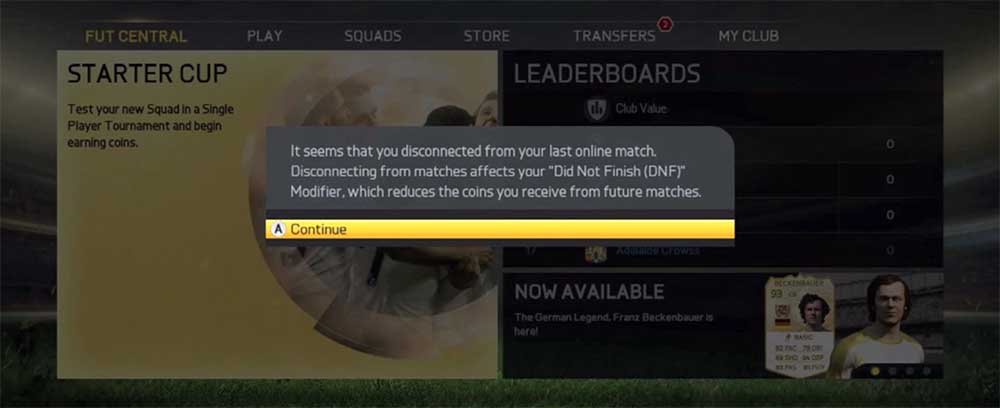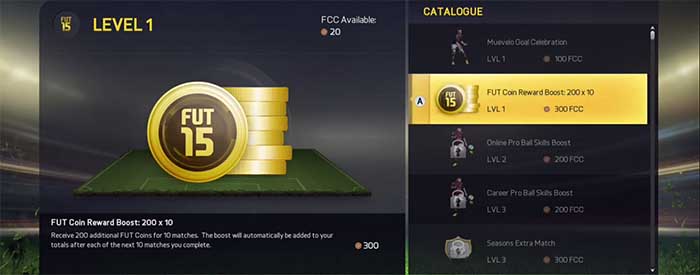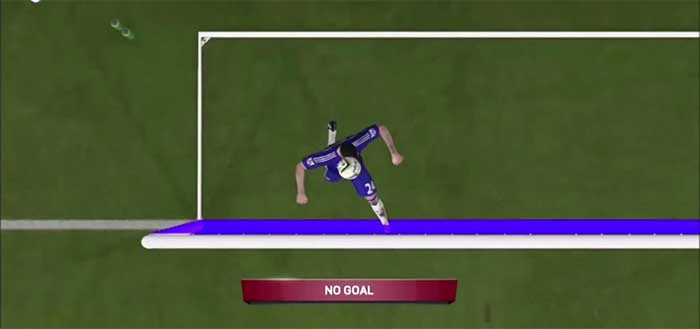The website’s author has always wanted to do something while being some place near the community where he could explore more freedom of content. In this area, which will start by being a monthly thing, he’ll definitely have the opportunity to show a mostly personal vision about (not only) the game.
Who Framed FIFA 15 Ultimate Team ?
This is one of those themes almost everyone has got an opinion on. The problem is that people tend to make their opinion extremist, defending their point of view just as they would defend their favourite club. Either they absolutely hate the changes, or they absolutely love them. Things aren’t always black and white. It’s important to leave emotions aside and analyse the facts as impartially as possible. This is what I’ll be trying to do, although obviously every analysis has its personal component.
Most players define which side they’re on according to the benefits EA’s strategy has brought them. In general, people who already had the best players are against price ranges. They watched their cards lose too much value, their biggest source of profit, trading, turned almost inexistent and they feel like the tons of coins they have now are worth nothing since the best cards can no longer be found on the market. The ones that agree with the changes are mostly those who don’t buy coins, don’t use Autobuyers and they feel like it’s become easier for them to get the best players, which they were never going to be able to afford before. People and their egocentric analysis forget that it’s not about our coin balance in the end, but seeing whether or not the game’s problems have been solved. Has it not become sustainable?
Before I go on, just to help people who aren’t familiar with the game keep up, here’s an overview of what happened. Since the beginning of FUT 15, the most expensive player cards have been the target of a never before seen kind of speculation, which made them inaccessible for most players. EA Sports didn’t hesitate to blame it on the coin sellers and autobuyers. So they decided to fight them by implementing several changes in the game, including the Web App and Companion transfer market deactivation and then the definition of maximum and minimum prices for each card, followed by the omission of the seller’s club name on live auctions and bigger tournament prizes. Will all that have good results?
FIFA 15 Ultimate Team is certainly a superb game. Original, creative and extremely addictive. But it suffers from many problems that supposedly could be easily solved: faulty servers and tournament prizes, banned accounts for no apparent reason, cards stuck on the market or simply gone, punishments for disconnections that don’t make sense, incorrect in-game statistics etc… I could sit here all day and list problems but I think you got the idea. These are serious errors that affect our game experience and EA just don’t give them proper attention. Nevertheless, it’s not because of all these problems that I should stop analysing the changes introduced on the FUT 15 transfer market. These are two different things. After all, micro-transactions are what makes this a differentiated game mode. You have to respect more and marginalize less those who take advantage of them.

The sentiment of “It’s EA’s game, so they make the rules” is frequently echoed. While this holds true, it’s evident that EA prioritizes initiatives that drive FIFA Points sales over addressing fundamental game issues. They recognize their market dominance, boasting a vast and devoted fanbase, and prioritize maximizing profits. However, they may face surprises with FIFA 16.
While EA holds the authority to shape the game, altering rules midstream is a disservice to paying customers. Their obligation is to deliver a finished product, not transform FIFA 15 into an experimental ground for FIFA 16. Thousands of players invested considerable time earning coins legitimately, hoping to realize their dream teams. It’s unjust that their efforts were devalued overnight, despite their financial standing remaining unchanged.
The rapid escalation in coin seller and Autobuyer activity compelled EA to take action swiftly. However, the timing of their intervention was ill-conceived. Implementing measures mid-game disrupted the player experience. While combating illicit activities is necessary, the timing and execution were flawed. The measures taken were ineffective, prompting EA to resort to repeated deactivations of remote access apps like the Web App and Companion App.
EA’s aggressive stance against coin sellers has intensified, employing moral rhetoric and implementing measures like Price Ranges. Yet, these actions have unintended consequences, impacting both gameplay and EA’s reputation. Despite efforts, coin sellers persist, employing innovative tactics. EA faces a dilemma: eradicate these entities entirely or persist with policies that inadvertently bolster them. The community eagerly anticipates EA’s next move, a decision that will shape FIFA 16 and beyond.

‘Who framed FIFA 15 Ultimate Team?’ is the title of this article, and if you’ve been paying attention, you’ll notice that I don’t blame the autobuyers or the coin sellers, but rather the game developer. They have the responsibility to provide the customer with a functioning product and should take the appropriate measures at the right time to ensure that happens. If they consider autobuyers and coin sellers to be at fault, then they must act accordingly without negatively affecting the player’s game experience. As long as I’m able to play FUT 15 under the conditions promised to me when I bought it, which isn’t the case.
“But aren’t the autobuyers and coin sellers guilty?”, you ask. In my opinion, they do contribute to the game’s failure, but they are not solely to blame. EA bears the ultimate responsibility. Allow me to explain. The game’s current state required an exceptionally high level of inflation, leading to inflated prices. This inflation is primarily driven by coins generated within the game, starting with pack openings using FIFA Points. EA exacerbated this by launching successive Happy Hours and injecting a vast number of coins into the game during events like FUT United, Black Friday, Christmas, TOTY, and more, all in an effort to sell more FIFA Points.
Both autobuyers and coin sellers perpetuate market injustice. Those who use these services gain unfair access to a larger pool of coins from other players, exacerbating inequality. While this may contribute to inflation on certain prices, the root cause remains the FIFA Points market.
Another crucial aspect to understand is the market’s behavior. Experienced Ultimate Team players have a broader understanding of price dynamics and can anticipate trends. For example, Ronaldo and Messi, the two most expensive players, consistently increase in price over time. This accumulated market knowledge leads to speculation, creating a cycle that EA should address instead of solely blaming coin sellers. While coin sellers are certainly culpable, mechanisms such as automatic upgrades for in-forms have also contributed to inflated prices. EA must take responsibility for these market tendencies rather than shifting blame.

Inflation in FIFA 15 became so rampant that suspicions arose about possible bugs in the game allowing for coin generation. EA refused to address these concerns, likely to avoid shifting blame away from coin sellers. However, there are strong indications that the developers themselves may be at fault. The introduction of a maximum daily rewardable games limit per account hints at deeper issues. Bots programmed to initiate offline season games and interrupt them with a disconnection intercept the server’s response, altering it to grant coin rewards. This exploitation has persisted for three years, leading to inflated leaderboards and undermining the game’s integrity.
It’s astonishing that a company of EA’s caliber could overlook such glaring issues. Similar cases, like cards exceeding 15 million coins on the FIFA 14 market, highlight EA’s lax approach to addressing fundamental flaws. Third-party applications bypassed price limits, exploiting vulnerabilities in the server’s validation process. EA’s tendency to opt for quick fixes, such as deactivating the EAS FC catalogue bonus reward item, rather than addressing underlying issues, reflects a disregard for the game’s long-term health. Despite two years passing, these problems remain unresolved.

This article isn’t intended as an anti-EA propaganda piece; rather, it’s focused on finding solutions to improve the gaming experience. Despite the challenges faced by FIFA 15 Ultimate Team, arguably worse than ever, the pressing question now is whether FIFA 16 will address these issues. Will it be worth purchasing? Can EA rectify this year’s problems and restore trading functionality?
Addressing the game’s myriad bugs and weaknesses won’t be easy, especially considering EA’s apparent lack of focus on eliminating them. While the Price Ranges feature may persist, its implementation has been fraught with missteps. Incorrect price definitions, attempts to standardize prices across platforms, and inadequate response to market dynamics have exacerbated the situation. Attempts to force desired prices onto players have led to player card extinction and market stagnation.
While access to non-inform (NIF) cards has improved, the market remains stagnant. With the season well underway, interest in basic cards has waned, hindering squad improvement. Players are reluctant to sell valuable cards due to anticipated depreciation and uncertainty in finding suitable replacements. Furthermore, ongoing price range adjustments deter investment in high-value cards, resulting in a market flooded with unsold cards and diminished trading activity. While it’s still possible to assemble decent squads, the Ultimate Team market’s decline has significantly altered the gaming experience.

While Price Ranges may continue into FIFA 16, some inherent problems are likely to persist. Even with broader price ranges, trading may lose its appeal. Removing minimum prices could alleviate some issues, but EA seems reluctant due to concerns about combating coin sellers, despite this not being a definitive solution. Previous attempts to define limits have not resolved all problems, as seen in past iterations of the game.
EA’s chosen approach may have its merits, albeit at the expense of trading enthusiasts. However, navigating the complexities of such a vast economic system is inherently challenging. Adjusting match coin rewards, tournament prizes, and season rewards could offer a fairer playing field, mitigating the disparity between players who engage in gameplay versus trading. Yet, these adjustments must be made cautiously to avoid exacerbating market inflation.
Options like increasing the availability of top players or reducing the price of FIFA Points may not be viable, as they could impact EA’s revenue negatively. Finding the right balance is crucial, and players can only hope that EA takes appropriate steps for FIFA 16.
“But do EA actually have reasons to be worried? How bad are things?” you ask. Very bad, I’ll answer. For the first time in the history of this game mode, an increasing number of players isn’t expected for the next year. Quit rates will be the highest ever, even considering that many players that are currently dissatisfied will end up buying the game. While there are people who can live without a transfer market, there are also lots of people who both won’t give up the fun buying and selling offers and won’t accept the developer’s kind of disrespect that changes the rules during the game and doesn’t focus on problems that occur every year just because they don’t directly affect the FIFA Points market. The #futrip hashtag didn’t go viral because of nothing. It’s not just the coin sellers showing dissatisfaction, as some people would say. It was real people, honest people, like me and you.
Although there isn’t enough solid evidence, the number of people that apparently have left Ultimate Team is frightening. According to Chu Morah, EA Sports FIFA Community Specialist, there were more people playing UT in the last week of March than during the TOTY, which I can only face as an April Fools joke since that was exactly the day of said revelation. All the numbers I have point the opposite direction. You just need to look at the number of live auctions on the transfer market to see that’d hardly be the truth. I’ve got the privilege to look at some more data that can give up a clearer idea of what’s going on. Apparently, a decrease of around 55% was registered in the couple of weeks that followed the Price Ranges implementation, and then one of 40% in the weeks preceding the TOTS release. Less players represent fewer copies of the game being sold and mainly less income from FIFA Points, which is more than enough to make EA’s alarm go off for their golden goose is at risk. The implementation of these changes mid-season was an authentic shot in their own foot. It would’ve been better to leave the game the way it was and only apply these changes on FIFA 16. Now the company’s image faces an ugly fate.
Now that I’ve spoken my opinion out, supported by several facts, I can finally shut it and leave it to you in the comments section. Whatever happens, FIFA U Team will be around to help those in need.
I commend you all who read this entirely. I promise I’ll try and be as brief as possible next time.
